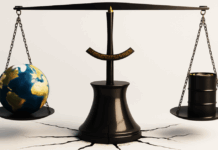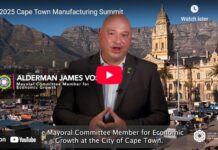By Ruth Rehbock
IN October 2020, Minister of Mineral Resources and Energy Gwede Mantashe stated that municipalities across the country could generate their own power. The two rulings permit local governments to sell surplus electricity back to Eskom.
Deon Louw, Director of Engineering services for Stellenbosch Municipality, clarifies what this means for the area. “If we generate ten percent of our own power, that which is normally shed during Levels 1 and 2, then we don’t have to switch off anybody in Stellenbosch.” The one proviso is local government must generate sufficient power to keep the lights on once the sun goes down.
“We have started producing power using solar panels installed at five places on our buildings. These create around 780 KW of instant energy, around one per cent of the load that we need to produce,” Louw says.
At present, with the help of the private production of solar power, Stellenbosch produces around 5 MW, which means they are only two megawatts away from their goal of avoiding the first two levels of load-shedding.
“The Municipality hopes to one day produce the total 75 MW of energy they rely on from Eskom at present,” says Louw. However, they are only at the beginning of that process.
Burning waste is another way the municipality will generate power. “When you dump wet (organic) waste, it produces methane through a process called anaerobic digestion. We can burn the methane from one of our closed landfills.” Louw adds they will go this route however the returns are small. An extension of this, he says, is to burn dry waste during hours of darkness however the goal is to diminish CO₂ emissions as much as possible.
One limitation to solar power is that it becomes a short-term solution if you cannot store the energy, so University’s researchers are examining methods to overcome this obstacle. Battery storage is one way though the benefits of storage must outweigh negative consequences for the environment. Lead acid batteries harm the environment more than lithium-ion ones, nonetheless all batteries leave a large carbon footprint.
“Another route is to generate power mechanically and researchers are investigating hoisting concrete blocks during the daytime using solar power and generating power through lowering them and running a turbine during the night,” explains Louw.
So far, in Stellenbosch, solar power is up and running on the five municipal buildings and the tender for getting energy from methane gas is running. “We have an independent consultant investigating the viability of the burning of dry waste for energy,” he adds.
In tandem with the Atomic Energy Corporation’s research, Stellenbosch Municipality is looking at using a process whereby one can heat waste to high temperatures without releasing carbon into the atmosphere.
The CSIR is investigating how Stellenbosch’s networks will function if solar or other means of privately generated power is fed into convenient points in the network. The Municipality is waiting to hear about what his means in terms of getting to their self-generated ten percent of power.
“Our work in Stellenbosch means we are very close to producing that extra little bit that will exclude us from the widespread loadshedding at Levels 1 and 2,” Louw says.














